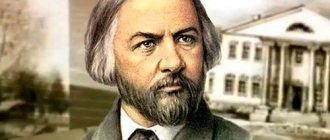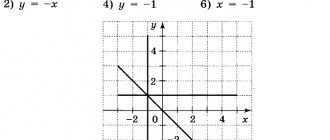Music - lessons, tests, presentations, notes
Create your teacher website PC and PPC courses Video lessons Olympiad Webinars for teachers
- home
- Music
Watch and download free lessons, tests, notes, presentations and other useful materials on music for teachers and students.
- All 7888
- Lessons 3038
- Presentations 1176
- Tests 184
- Planning 483
- Events 1362
- Other 1645
- All classes
- For preschoolers
- 1 class
- 2nd grade
- 3rd grade
- 4th grade
- 5th grade
- 6th grade
- 7th grade
- 8th grade
- 9th grade
- Grade 10
- Grade 11
The role of the accompanist in preparing a student for a concert performance The role of the accompanist in preparing a student for a concert (competition) performance…. 10/08/2020 Pleschenko Ksenia Stanislavovna 8 0 |
| The fairy tale genre in the piano work of N.K. Medtner Among Medtner's works for piano, forty miniatures of varied character, elegant and masterfully written, entitled by the author as “... 04/28/2020 Turkina Irina Andreevna 97 0 |
| Musical instruments Lesson notes will be useful for music teachers. Development of students' concepts about musical instruments.... 10/09/2020 Tsepeleva Tatyana Pavlovna 5 0 |
| Musical education of students in a correctional school. The lesson notes will be useful for music teachers. Development of students’ concepts about musical tastes…. 10/09/2020 Tsepeleva Tatyana Pavlovna 4 0 |
Project "Bel Canto" The project tells about the bright performers of the Bel Canto style... 10/08/2020 Kobzar Irina Georgievna 4 0 |
| Specifics of working with beginning vocalists The methodological development is devoted to the specifics of a teacher’s work with beginning vocalists... 10/09/2020 Kolevatykh Larisa Anatolyevna 8 0 |
| The need to use electronic keyboard instruments in the educational process of children's music schools. The development reveals the need to introduce electric musical instruments into the educational process of children's music schools, shows what broad opportunities open up for teachers with their use... 09/05/2020 Oleynikova Galina Aleksandrovna 37 1 |
| Culture and traditions of the peoples of the Baltasinsky district of the Republic of Tatarstan The Baltasinsky district was organized on August 30, 1930. Representatives of more than ten nationalities live and work here. In addition to the Tatars, who make up 87% of the population, ... 06/29/2020 Garafutdinova Farida Faritovna 74 0 |
| “Phrasing in vocal works” What is vocal phrasing. Peculiarities of working on phrasing in vocal works.... 04/27/2020 Svetlana Aleksandrovna Antonenko 88 0 |
| Topics of creative projects 9-10 grades In grades 9-10, students write projects in various subjects. In this development, topics on music... 10/08/2020 Kobzar Irina Georgievna 13 0 |
| Art of the Bolshoi Theater The material was selected for the music room at the art school. The material tells about the history of the Bolshoi Theater... 05/17/2020 Rusinova Vera Mikhailovna 82 0 |
| Using various methods and techniques for developing vocal skills in children of primary and secondary school age (from work experience) The paper presents methods and techniques for developing vocal skills in children of primary school age. The work is intended for music teachers of general education institutions and specialists of the Children's Art School... 02.09.2020 Makhortova Olga Lvovna 33 0 |
| “The influence of solo singing and group singing classes on improving the psychophysiological state of a person.” In modern conditions of social development, due to a very dynamic way of life, saturated with diverse technological and information devices, constant innovations, which, on the one hand... 05/18/2020 Mizgunova Victoria Mikhailovna 69 0 |
| Music 2nd grade “Beyond the school threshold” Lesson type ө introduction. Learning goal: to perform various songs in one breath, accompanied by a recording, observing the tempo and rhythmic pattern. Equipment: presentation about musical… 07/03/2020 Bekzhanova Sayran Kabdolovna 72 0 |
| Scenario of musical entertainment for young children: “Visiting grandma” Interesting entertainment for young children... 06.16.2020 Zhulanova Marina Rinatovna 62 0 |
| Children's musical folklore - as a means of socializing children with disabilities, creating a socio-cultural environment Goal: creating a unified socio-cultural space in the School and family through children's musical folklore. Tasks: 09/04/2020 Nikiforova Margarita Nikolaevna 42 0 |
| Scenario plan for the concert based on the plays of O.A. Getalova “Summer in the Village” This is a whole story about a vacation in the village, united by a common plot, which includes genre sketches, musical portraits, landscapes…. 02/21/2020 Zakharova Tatyana Sergeevna 95 1 |
| A lesson on studying fire safety rules with children of senior preschool age to form in children a conscious and responsible attitude to the implementation of fire safety rules. To equip with the knowledge, skills and abilities necessary to act in extreme situations…. 03/09/2020 Shcherbinina Olga Anatolyevna 84 0 |
| The importance of studying the sonata style at an early stage in the education of students in the Children's Art School. In the repertoire of the Children's Art School students in the music departments there is a large form, in particular “Sonatinas”. The importance of studying this form is that students develop musical skills. outlook, performing skills... 07/17/2020 Golenishcheva Galina Ivanovna 71 0 |
| Modern pedagogical technologies in the work of a choirmaster: between tradition and innovation Article on the topic “Modern pedagogical technologies in the work of a choirmaster: between tradition and innovation”... 02/03/2020 Zubikova Olga Valerievna 90 1 |
- ← Back
- Continue →
Summary of a music lesson for grade 7 on the topic:
In musical theatre. Ballet. 7th grade
Gainetdinova Liliya Foatovna, music teacher
The article belongs to the section:
Music teaching
Lesson objectives:
- Educational: to update students’ knowledge about ballet using familiar theoretical, musical, artistic material; reveal the features of ballet of the Romantic era; introduce the names of outstanding performers in the field of ballet art.
- Developmental: develop interest in the subject, characterize musical images and determine their development, find parallels in images of music, literature, and fine arts.
- Educational: to cultivate emotional responsiveness to the perception of classical music, to develop interest in the history of the ballet genre.
Equipment
: multimedia projector, textbook by G.P. Sergeeva, E.D. Kritskaya “Music” for grade 7, phonograph for this textbook.
Lesson plan:
- Organizing time.
- Learning new material.
- Consolidation of new material.
- Homework.
During the classes
1. Organizational moment (teacher’s greeting).
2. Teacher: the topic of our lesson today is “In musical theatre. Ballet" ( slide 1).
In 5th and 6th grade, during music lessons you were introduced to the art of ballet. Let's repeat the features of the ballet genre, name the types of arts that are combined in a ballet performance, famous ballets and composers, as well as creative professions involved in the creation of a ballet performance (children answer questions, work with the textbook “Music”, grade 7, p. 26 - 27). I suggest playing the game “Guess the Melody”. After listening to the proposed musical fragments, you will name the stage work, the composer, the name of the musical (ballet) number, what type of dance this fragment belongs to (fragments of “Polovtsian Dances” from A. Borodin’s opera “Prince Igor” are heard, dances (polonaise, mazurka, krakowiak ) from the Polish act from M. Glinka’s opera “Ivan Susanin”). Determine the need to introduce ballet numbers into an opera performance (ballet numbers emphasize the peculiarities of national color, dance imagery, historical authenticity, and contribute to the development of opera dramaturgy).
Ballet
(French: Ballet - dancing) is a type of musical and theatrical art, the content of which is expressed in the images of choreography.
This is a synthetic art form that includes drama, music, choreography, and visual arts. These types of arts do not exist on their own; they are subordinated to choreography. Ballet is the highest form of choreography (slide 2).
Ballet has unlimited possibilities for imaginative reflection of the surrounding reality, it is able to embody philosophical thoughts and feelings, and reveal life conflicts. Ballet always glorifies the beautiful in a person, fosters good and noble feelings, affirming the ideas of humanism (slide 3).
Libretto
- the basis of a ballet performance
.
It outlines the main events, defines the idea and the conflict.
The libretto is based on a literary work and is written taking into account the choreographic and musical embodiment of the idea. Typically, scripts are written by ballet playwrights, but the author may be a composer, choreographer, artist or performer ( slide 4).
Based on the script, the composer writes ballet music. A ballet performance is divided into acts, scenes and individual numbers. The role of music in the play is great: it reflects all the events occurring in the script and enriches it with the content of musical images. As a result of the embodiment of the content of the script and music, the musical dramaturgy of the ballet arises - the basis for creating choreography .
When creating music for ballet, collaboration between the composer and the choreographer is necessary to determine the nature of the future choreography
(slide 5).
Dance
- the basis of choreographic action, it embodies the states and characters of the characters. Pantomime is subordinate to dance; it can form the basis of the dance and be included in the dance.
In ballet, there are different types of dance: classical (equivalent to ballet or theatrical dance) and characteristic (ballet dance based on folk dance). Each of these dances is divided into solo, ensemble and mass (corps de ballet) ( slide 6).
In a ballet performance, the artistic design of the action and the stage design of the costumes, which are the embodiment of the idea, are of great importance. Costumes show the characteristics of the characters and emphasize the historical era. The scenery on stage characterizes the environment and emotional atmosphere of the action. The performance must achieve unity of costumes, scenery and lighting ( slide 7).
An important role in a ballet performance is assigned to the conductor. His work lies in the ability to embody the composer’s plan, the ideas of the choreographer-producer, to emphasize the individuality of the soloists and the skill of the corps de ballet in performing crowd scenes
(slide 8).
Romanticism as an artistic movement took shape most fully and consistently in the French ballet theater. One of the prerequisites for this is the high development of classical dance techniques, especially women's. Romantic tendencies manifested themselves most clearly in the ballets of F. Taglioni, in the ballet La Sylphide (1832), where the action unfolds in parallel in the real and fantastic worlds. Science fiction has opened up space for the use of technology and its further development in order to identify in dance the essential properties of the characters depicted. It was women's dance that came to the fore in the era of romanticism. Jumping was introduced more and more widely, and dancing on pointe shoes arose. New compositional forms of classical dance emerged, and ensemble, duet and solo dances developed. The role of the leading ballerina has increased. The tunic appeared as a dancer's permanent costume. The role of music has increased, which contributed to the renewal of the musical style of ballet; The emotional and figurative contrasts became sharper, and new democratic dance forms appeared in the scores. A symphonization of dance action began, the pinnacle of which was the ballet “Giselle”.
The ballet “Giselle” is one of the greatest created for the ballet stage (slide 9).
The play was born in Paris in 1841 and has an unusual history of creation. It was created by several men in love for one beautiful ballerina - Carlotta Grisi (1819 - 1899). The creators of the performance were choreographer Jules Perrot, Carlotta’s partner in this performance and the first performer of the role of Count Albert, Lucien Petipa, as well as the writer T. Gautier, who was in love and fascinated by Carlotta, who found inspiration in the works of Heinrich Heine and wrote a libretto based on the works of Heinrich Heine. In the works of G. Heine, beautiful Willis are mentioned, brides who died before the wedding and who take revenge on travelers for their early death by dancing and driving them to exhaustion. The music for this ballet was written by composer Adolphe Charles Adam (1803 - 1856).
9 years after the resounding success of La Sylphide, a new masterpiece is created - the ballet Giselle, which covered all previously created performances (slide 10).
The play lasted on stage for 18 years and was performed 150 times. A year later, the performance was brought to Russia, to the Imperial Russian Theater, and remained on the Russian stage forever. J. Perrault himself worked in Russia on the first productions. The performance was remade many times due to the succession of new generations of performers. The final edition of the ballet belongs to Marius Petipa.
The artistic design belongs to A. Benois, who worked in collaboration with S. Diaghilev, designing many times the performances of Diaghilev's enterprise. The design of the ballet “Giselle” in Russia was so ideal that the performances of the Milan La Scala Theater and others are staged with this artistic design .
(slide 11).
The staged version performed by the soloists and corps de ballet of the Paris National Opera, which you will watch today, belongs to Patrice Bard and Evgeniy Polyakov (1991). By this point, “Giselle” had changed a lot: there were two versions - French and Russian. In the Russian version, at the very beginning of Act 1, a pas de deux appeared to Müller's music. In Russia, this pas de deux was created in connection with a peasant wedding at the grape festival. In the French ballet, this scene at the festival is lost: the peasants dance in front of the gentlemen, which does not correspond to the canonical Russian version.
The director E. Polyakov graduated from the Moscow ballet school, danced at the Novosibirsk Theater, then emigrated to the West. He worked for many years at the French Opera as an assistant to R. Nuriev and was a leading teacher and tutor. He knew exactly the Russian version and the edition of L. Lavrovsky, which was shown at the Bolshoi Theater. Therefore, many movements in French ballet exactly correspond to the Russian performance, but are presented with a special French accent. Another difference between the Russian tradition and the Western one in performance is that hugs and caresses, as is customary in French ballet, are unacceptable in Russian ballet.
In this version in the French ballet, it is absolutely clear where Giselle goes - she goes to the grave. This is not in any Russian version. In the Russian version, Count Albert does not want her to disappear; he takes Giselle in his arms and carries her away from the grave. Previously, in the French ballet, it was invented that Albert takes her to a clearing, the ballerina (as planned by the director) falls under the stage, and flowers appear in her place. This was a personification of the fact that with the rays of light Giselle melts. The appearance of flowers emphasized the traditions of romantic ballet. In the present performance, the French did not return Giselle’s romantic “departure”: where Giselle came from is where she went.
In terms of dance, the ballet “Giselle” continues the traditions of romantic ballet. A romantic play has its own canons: for example, the two main characters, Hilarion and Albert, did not dance in Act 1 in the original version. It is only in Act 2 that Albert's variations appear. According to the laws of romantic ballet, only the positive hero had the right to perform the classical variation. And since in the 1st act Albert appears as a deceiver, a man who destroyed an innocent creature, in the 2nd act he atones for his guilt with his suffering. Giselle grants him forgiveness and he gains the right to classical dance. The French did not return this from their first performances. Thus, in the 20th century, these traditions are disappearing, losing the romantic orientation of ballet.
Today's fragments of the play "Giselle" will be performed by the current stars of the French stage. The role of Giselle is performed by Laetitia Pujol, who is distinguished by her perfect performance technique, an excellent mimic actress and an unusually musical dancer. She was very quickly promoted to the rank of etoile. With the rank of etoile in French ballet, dancers receive many privileges, including choosing roles. One of the first roles Laetitia chose was the role of Giselle. The entire performance of the Paris National Opera is a precisely musically performed performance, which is important for a ballet performance and the performance of classical dance. So, a ballet in 2 acts to a libretto by T. Gautier, J.A. V. Saint-Georges based on the legend of G. Heine. Choreography by J. Coralli, J. Perrault. Music by A. Adam. Scenery and costumes by A. Benois. Performers: Giselle – Laetitia Pujol, Albert – Nicolas Le Riche, Myrta – Marie-Agnès Gillot, Hilarion – Wilfried Romoli, soloists and corps de ballet of the Paris National Opera ( viewing fragments of the ballet “Giselle”).
Ancient “Giselle” by Adolphe - Charles Adam... A masterpiece of masterpieces, the dream of any ballerina. Hundreds of dancers perform this part, but history has preserved for us the names of the chosen ones. The part of Giselle is the most difficult of the parts. In addition to the brilliant choreography, it contains the whole range of deep human experiences: first love and deception, the scene of madness and the death of the heroine. In the second act, the heroine appears in the form of a mystical jeep. Ballet art does not know any other such multifaceted image of transformation. And each ballerina tells the story of her Giselle from the stage...
The ballet “Giselle” was staged on the best stages in the world, and finally she settled in Russia. The great Marius Petipa generously endowed “Giselle” with new dances. The Frenchwoman “Giselle” has been transformed and acquired a Russian soul. The great Russian ballerinas Anna Pavlova, Tamara Korsavina, Olga Spesivtseva shone in this role. It was they, the three graces of Russian ballet, who determined for a hundred years in advance what the French “Giselle” should be like.
Giselle returned to Paris during Diaghilev's seasons in 1910. The play has not been performed here for 50 years. The success was stunning. O. Spesivtseva was offered to perform the role of Giselle at the Paris Opera. Later, the brilliant ballerina seemed to repeat the fate of her heroine - she spent 22 years in a clinic for the mentally ill. No one else dared to dance Spesivtseva’s enchanted part in Paris. In 1935, there was a new sensation in Paris: a new Giselle, Marina Semenova, came on tour from Moscow. And again, the Parisians were shocked by the Russian ballerina, her divine beauty and perfection of technique.
One of the best Giselles in history was Giselle Galina Ulanova. In 1956, on tour in London, she captivated the London public. Immediately after the tour, by order of the queen, filming began with the participation of G. Ulanova. The ballerina was then 46 years old. The great Marina Semenova rehearsed the part with Marina Kondratieva, the most ethereal Giselle.
In 1958, an event took place on the stage of the Bolshoi Theater - a tour of the Paris Opera. At one time, Russian Giselles delighted the French public. Now the French women Lian Deyde and Yvette Chauvire shone on the stage of the Bolshoi Theater, striking Muscovites with truly French charm.
Time passed, and in the early 60s, two young Natalias appeared in the guise of Giselle: Natalia Makarova, soloist of the Mariinsky Theater, and Natalia Bessmertnova, prima of the Bolshoi Theater. It seemed that N. Bessmertnova was born for the role of Giselle: expressive hands that resembled white lily flowers, huge expressive eyes, aerial flight. The chief choreographer of the Bolshoi Theater L. Lavrovsky saw in her the ideal Giselle for his production and he himself prepared this part with N. Bessmertnova. And soon a new Giselle came to the stage of the Bolshoi Theater - Lyudmila Semenyaka. Ballerinas who were called great, outstanding, wonderful always danced at the Bolshoi Theater. So, Prima ballerinas of Russian ballet:
- GALINA ULANOVA (1909 – 1998) – icon of classical ballet. Her art is perfect and harmonious. It is based on ideal correspondence, impeccable proportions of the vital and the conventional. This great ballerina had two monuments erected during her lifetime - in St. Petersburg and Stockholm (slide 12).
- MARINA SEMENOVA (1908 – 2010) – student of the legendary Agrippina Vaganova. The name of Semenova is associated with the revival of the imperial glory of Russian ballet. Her signature role, besides the role in the ballet “Giselle”, was the role of Odette in “Swan Lake” (slide 13).
- OLGA LEPESHINSKAYA (1916 – 2008) knew how to reflect her own sparkling character in every image, possessing impeccable technique. She masterfully mastered all means of classical dance. Dance in the life of a ballerina was the highest achievement of the meaning of her existence (slide 14).
- EKATERINA MAKSIMOVA (1939 – 2009) – student of Elizaveta Gerd and Galina Ulanova, an outstanding Russian ballerina who danced the entire Bolshoi Theater repertoire. She said her favorite role was Anyuta from the modern ballet of the same name to the music of V. Gavrilin, staged especially for her. The famous duet of Ekaterina Maksimova and Vladimir Vasilievna is known all over the world (slide 15).
- NATALIA BESMERTNOVA (1941 – 2008) – brilliantly performed the role of Giselle in 1961. Her performance was compared with O. Spesivtseva and G. Ulanova, emphasizing the romanticism and spirituality of the image she created (slide 16).
- NADEZHDA PAVLOVA (born 1956) is the namesake of the famous Russian ballerina Anna Pavlova. She became famous early, having danced Cinderella and Giselle at the age of 17. Combined drama and comedy. The legendary impresario S. Yurok, who was the first to bring Anna Pavlova to America, once remarked: “I introduced the Americans to Nadya Pavlova. I’m ending my career with dignity, now I can die” ( slide 17).
- SVETLANA ZAKHAROVA (born 1979) is a new symbol of Russian ballet. Soloist of the Bolshoi Theater since 2003. The owner of a beautiful body and technique, works on the leading stages of the world. She is inclined to experiment: for her 30th birthday she showed on stage a new ballet “Zakharova. Supergame”, created especially for her ( slide 18).
Interest in the art of dance is a long tradition in the art of painting. Many Parisian artists found inspiration in the art of dancers. The great French impressionist artist Edgar Hilaire Germain Degas (1834 – 1917) was also fond of ballet. His tenacious gaze captured the very essence of the dancer's profession. Ballet classes attracted him much more than the performances of the Paris Opera ( slide 19).
Painting "Opera Orchestras"
became one of the first works written on this topic
(slide 20).
It is a small-sized canvas: we see a photograph accidentally taken during the performance. The artist invites the viewer to look at the stage through the orchestra pit. The entire foreground is occupied by people dressed in black tailcoats - musicians, below - a balustrade. The central place here belongs to the image of the painter’s friend Desiree Dio playing the bassoon. The composition is constructed in such a way that we can only see the lower part of the performance taking place on stage. The first thing the viewer pays attention to is the dancers in bright pink and blue tutus, and only after that the active white spot of the musician’s shirt turns his gaze to the main character of the picture. The master devoted his next works entirely to dancers.
For Degas, the art of ballet is, first of all, hard work, exhausting hard work, it is not for nothing that someone called this profession “hard labor in flowers.” The ballerina is not an ephemeral elf, but a creature of bones and muscles, dressed in tights and a light gauze skirt. Degas said: “They call me a painter of dancers.” But for him, ballerinas were just an excuse to depict wonderful fabrics and capture movements. Degas rarely depicted dancers on stage. He was more interested in what happened behind the scenes, in classrooms, at ballet rehearsals. Fragile, weightless figures of ballerinas appear before the audience not only in the spotlight on the stage, but also in the twilight of dance halls in short moments of rest. He showed what is usually not visible to the viewer: Degas even suggested looking through the crack of the slightly open door of the artistic dressing room.
One of the earliest paintings of the ballet cycle is “Dance Foyer of the Opera on
Rue Le Peletier” (slide 21).
The rehearsal is underway. Three dancers are located at the barre. Among the group of ballerinas on the right is a choreographer and violinist. A young dancer stood nearby, waiting for valuable instructions. There is a tense, empty space in the center of the composition. But right here and now a miracle will happen - the dancer will show her skills and turn the master’s idea into reality.
In the famous film "Dancing Lesson"
young ballerinas are depicted.
Each performs her own movements, because she is an individual. The central figure is the great choreographer of the Romantic era, author of the ballet “Giselle” J. Perrault. Dressed in a light linen suit, he leans on a wooden cane and watches intently. Spectators are also watching the dancers. In the far rows you can see ladies in hats, they are also watching the dance (slide 22).
It has often been said about Degas’s paintings that they are like photographs, so subtly fleeting moments are captured in them. And in painting, as in ballet, achieving lightness is the most difficult thing. Each ballet work, be it ballet variations or a whole canvas, is the result of observation, careful selection and long hard work. What seems instantaneous and random, impromptu, is not impromptu at all.
In the film “Before the Exam”
Degas captured young dancers preparing for an important performance.
Unlike other paintings, in which the painter sought to convey the lightness and grace of the movements of his heroines, here he emphasized their emotional state. One of the girls is standing, her posture is relaxed, her shoulders and head are lowered, as if she is saying a prayer before going out to the examiners. Her friend leans gracefully forward, massaging her leg. Behind them, two elderly ladies are sitting on a bench, calmly talking to each other. Degas sought to show the viewer an important moment in the life of ballerinas, when they are getting ready for a performance in order to go on stage and shine (slide 23).
In the painting “The Final Arabesque”
The artist captured Prima at the moment of triumph.
She shines in the light of the footlights, holding a bouquet of flowers. She is happy, and in a moment all the torment is forgotten: tears, bloody calluses and sprained ligaments. She is happy, because only the one who is dancing now has the right to be called the queen of the stage. In the background are figures of other ballerinas, their exit will soon (slide 24).
One of the most famous paintings by E Degas is “ Blue Dancers”
written in pastels
(slide 25).
Four ballerinas perform a pas de carte movement. Ballerinas are often not very friendly to each other, but here there is complete harmony and unity of the dance: the glow of the blue stage and soft-sounding music.
Dancers in blue, dancers in pink, dancers in purple, green, yellow... Delicate colors, light and movement opened the way for the artist to an amazing insight in painting. The ballet theme allows Degas to look for a new language, new techniques. Dance for Degas is the embodiment of the real world with all its everyday truth, a symbol of tireless perfection. It was not for nothing that he tirelessly repeated: “The muses work alone all day, and only in the evening they gather and dance.”
In every decade, on all stages of the world, its own Giselle is born. The image of a girl who has become a symbol of sacrificial and pure love continues to excite viewers in the 21st century. This historical performance adorns any theater in the world, and a ballerina whose repertoire includes the role of Giselle can consider herself accomplished. And every day the famous ballerinas of past years continue to look for new and new colors of this eternal image, but now with their students. Today, “Giselle,” even though she is already 170 years old, is still beautiful and attractive (slide 26).
3. Consolidating new material:
Name the prerequisites for the formation of romanticism in French ballet, the features of the ballet performance of the era of romanticism. Name the names of outstanding ballerinas who performed the role of Giselle at different times.
4. Homework:
Write down and remember the names of outstanding Russian ballerinas. Find the names of ballet troupes of world theaters.






